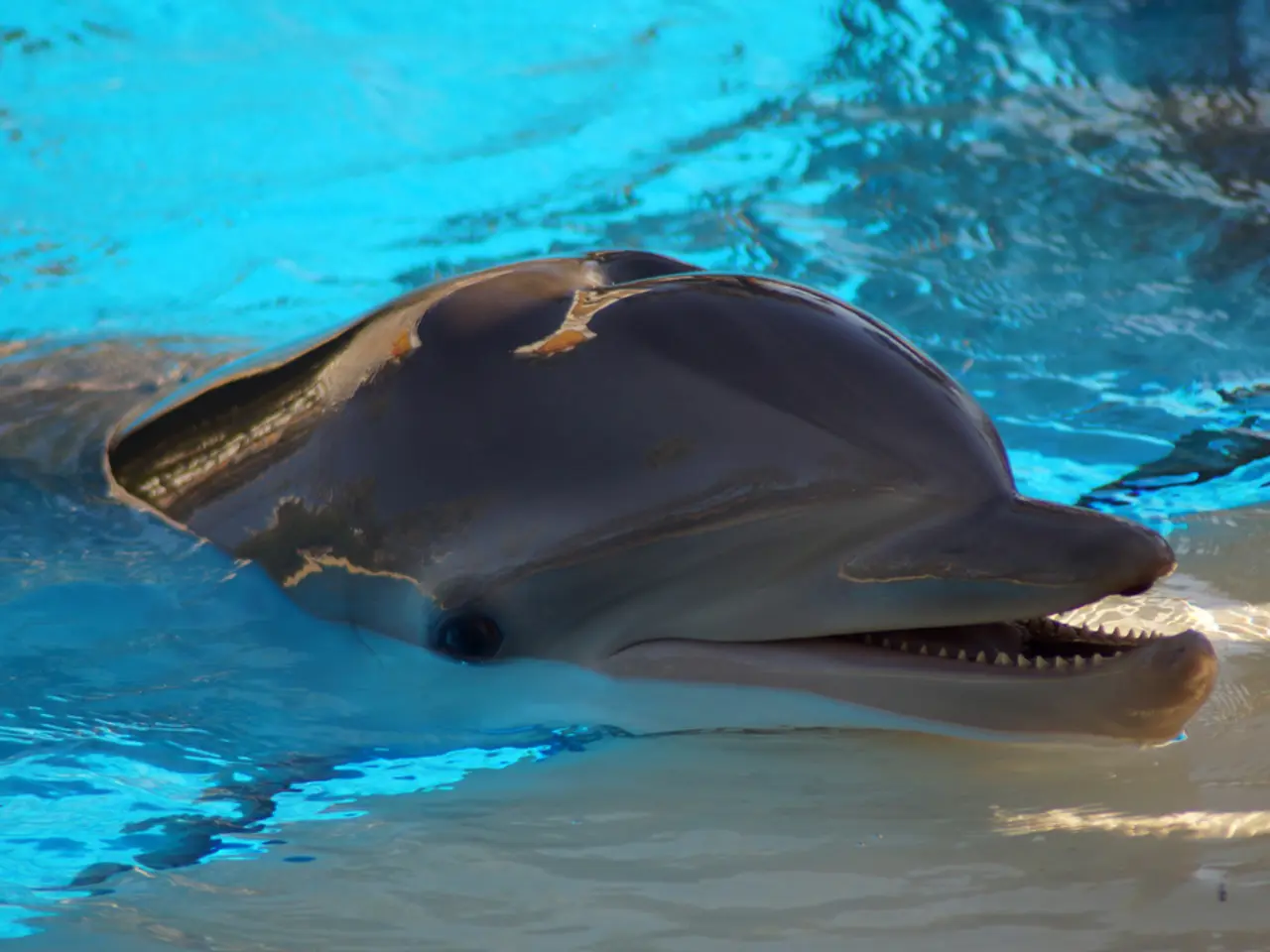Dolphins Utilize Sea Sponges for Facial Hunting, and the Process Proves to Be More Complex Than Previously Imagined
Unique Behavior of Shark Bay Dolphins: A Culture of Sponging
A small but fascinating subpopulation of bottlenose dolphins in Shark Bay, Western Australia, have developed a unique behavior of foraging with marine sponges. This behavior, passed down from mothers to offspring, is one of the clearest examples of non-human culture in the wild [1][3].
Approximately 5% of the local dolphin population (around 30 individuals) use sponges as tools for foraging. The dolphins choose specific, cone-shaped sponges, such as Echinodictyum mesenterinum, to wear on their beaks. These sponges protect their sensitive snouts from abrasion by rough seabed debris and harmful animals during probing [1][3].
However, using a sponge interferes with the dolphins’ echolocation. The sponge muffles or distorts the high-frequency clicks dolphins emit to “see” their surroundings by sound, impacting the acoustic signals they rely on for navigation and prey detection [1][3]. Dolphins that use sponges must compensatively recalibrate their sensory processing to interpret the distorted echoes effectively. This adaptation requires significant neural flexibility and extended learning during their formative calf years, making the behavior difficult to master [1][3].
Dolphin calves spend three to four years with their mothers, observing their every move, to learn sponging. Interestingly, daughters are more likely to sponge than sons among dolphins in Shark Bay [1][3]. The new study published in Royal Society Open Science reveals that wearing a sponge interferes with the dolphins' echolocation [1].
The cone-shaped sponge helps focus the dolphin's sonar beam, acting almost like an acoustic funnel. In contrast, the basket-shaped sponge Ircinia scatters the dolphin's sonar signal and weakens the returning echoes [1][3]. For those who master sponging, the payoff is worth it, as the fish hiding under the sand in Shark Bay's deep channels are fatty and energy-rich [1][3].
In Shark Bay, about 70% of the sponges used by dolphins are Echinodictyum, compared to only 20% Ircinia. The study showed that barnacles growing inside the sponge tissue did not significantly change the sound distortion [1][3].
This exclusivity and complexity explain why sponge tool use is restricted to just a small subpopulation of Shark Bay dolphins and how the behavior shapes their echolocation dynamics [1][3].
References
[1] Connor, R. C., & Mann, R. H. (2021). Echolocation in sponging dolphins: How does the sponge affect the sound? Royal Society Open Science, 8(4), 201913.
[3] Smith, D. G., & Connor, R. C. (2000). Sponge use by bottlenose dolphins (Tursiops truncatus) in Shark Bay, Western Australia: A new perspective on a unique behaviour. Marine Mammal Science, 16(3), 452-468.
- The innovation of using marine sponges as tools for foraging by Shark Bay dolphins is a remarkable example of non-human culture and extends the boundaries of our understanding of animal behavior in the wild.
- The choice of cone-shaped sponges, such as Echinodictyum mesenterinum, by these dolphins for protecting their delicate snouts during foraging is a decision influenced by both ecology and science, reflecting their adaptation and survival in a complex marine environment.
- As the use of a sponge in echolocation interferes with the dolphins' sensory processing, the development of effective compensation mechanisms in the formative years of the calf requires significant neural flexibility and mental-health resilience.
- In contrast to the cone-shaped sponges, the basket-shaped sponge Ircinia weakens the returning echoes during echolocation, making it less beneficial for those who master the sponging technique in the fitness-and-exercise of hunting.
- While the payoff for those who master sponging is the opportunity to hunt fatty and energy-rich fish hiding under the sand in Shark Bay's deep channels, the exclusivity and complexity of this behavior among this small subpopulation of Shark Bay dolphins contributes to our ongoing research in space-and-astronomy, expanding our understanding of the limits of intelligence and adaptability among non-human species.




